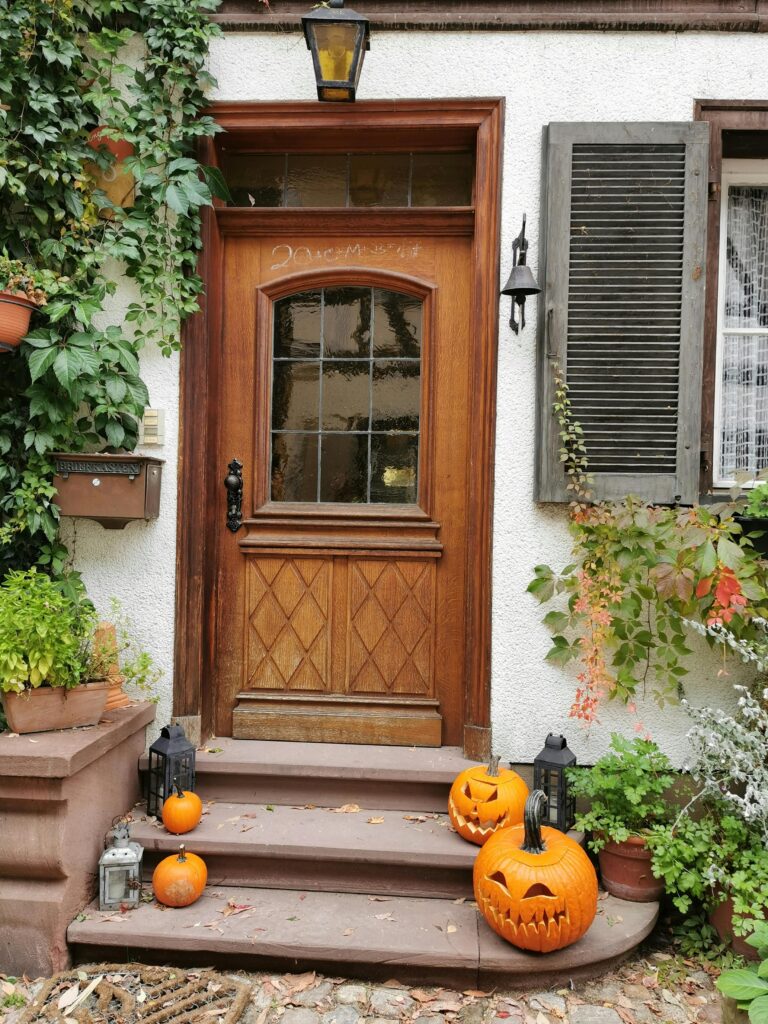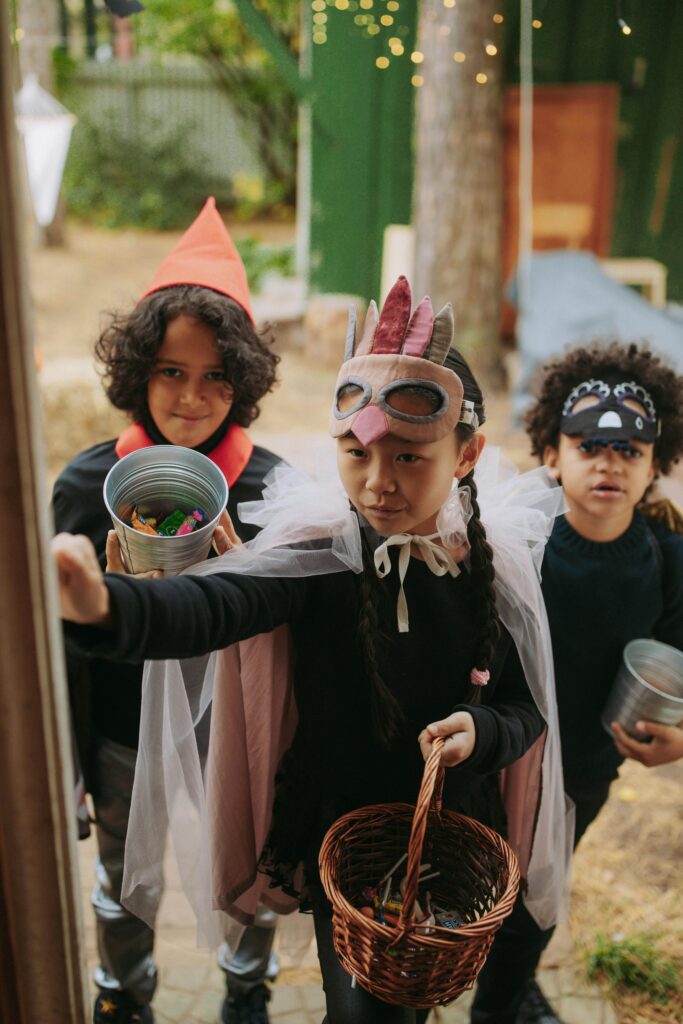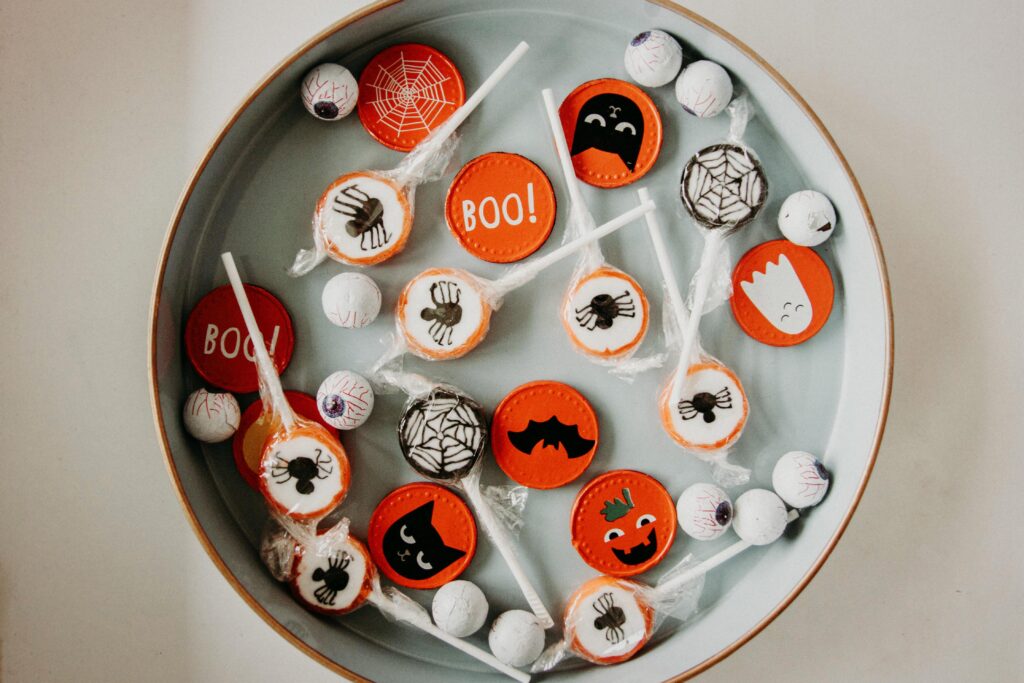As the moon rises and shadows creep, Halloween draws near with a haunting promise of fun… but beware! A ghostly footprint lingers, as plastic, waste, and unsustainable habits lurk in the dark. This year, let’s cast a green spell on our celebrations and make Halloween both spooky and sustainable!

Halloween is a fun and festive time of year, where people of all ages come together to celebrate with costumes, decorations, and spooky activities. It’s a time when creativity shines as individuals and families plan elaborate costumes and decorate their homes with pumpkins, ghosts, and cobwebs. Trick-or-treating, haunted houses, and Halloween parties are just a few of the many ways people enjoy this festive season.
But it is important to recognize that the traditional practices associated with it can result in a significant amount of waste and environmental impact. The use of plastic decorations, single-use costumes, and excessive candy packaging contribute to this issue. However, by making some simple eco-friendly adjustments, it is possible to celebrate Halloween in a way that minimizes harm to the environment.
Here are some valuable tips to help you ensure that this Halloween is eco-friendly!
DIY Costumes
Instead of buying a new costume each year, consider DIY options or reusing old ones. Get creative with clothes you already own, and piece together a unique look. Swapping costumes with friends or family is another great way to reduce waste. For kids, a dress-up box of costume staples can be used year after year.
Some other easy DIY examples The classic ghost costume is simple and sustainable. All you need is an old white sheet with holes cut for the eyes.

A black cat costume – you need a black outfit—leggings and a turtleneck or black dress—and some DIY ears made from a headband.
If you do need to buy a new costume, look for ones made from sustainable or upcycled materials.
Go To Thrift Stores
When thinking about making your Halloween more sustainable, consider visiting thrift stores for costumes or home decorations. Thrift shops can be treasure troves of unique, affordable pieces that can be repurposed into creative costumes or spooky decor. Whether you’re piecing together a vintage outfit or on the hunt for fabric and accessories, secondhand shopping not only helps reduce waste but also prevents the need for new, mass-produced items. By opting for secondhand items, you are contributing to a more environmentally friendly approach to Halloween, while also getting the chance to find one-of-a-kind items that can add an extra touch of originality to your Halloween celebrations. This way, you can enjoy the festivities while keeping your environmental impact low!
Composting Leftover Pumpkins

If you carve pumpkins for Halloween, don’t let them go to waste after the holiday. Pumpkins are organic and can be composted in your garden or added to a compost bin. Before composting, consider using the pumpkin for cooking – roasted seeds, pies, soups, or purees. Even the jack-o’-lantern remnants can be a delicious treat for wildlife!
Eco-Friendly Trick-or-Treating

Trick-or-treating can generate a significant amount of waste due to single-use candy wrappers. To minimize this, consider purchasing bulk candy and placing it in small paper bags or reusable containers. Look for candy brands that utilize sustainable packaging or possess certifications such as Fair Trade or Rainforest Alliance. If you’re throwing a party, homemade treats wrapped in paper or reusable containers can also serve as an eco-friendly alternative. When it comes to trick-or-treat bags, steer clear of plastic and choose reusable cloth bags or even repurpose old pillowcases. These can be adorned and personalized for added enjoyment!
Eco-Conscious Treat Alternatives

If you’re looking to avoid candy altogether, you can provide a variety of enjoyable alternatives such as small toys, coloring crayons, or stickers that are made from sustainable materials like recycled paper or biodegradable materials. Additionally, you might consider offering plant-based or organic snacks, such as dried fruit, nuts, or granola bars, which not only promote healthier choices but also come in eco-friendly packaging that reduces waste and environmental impact.



